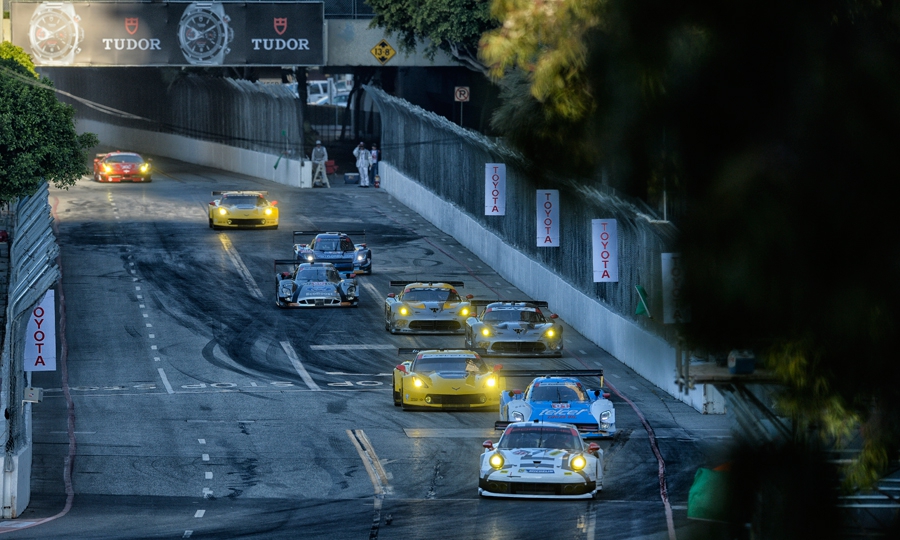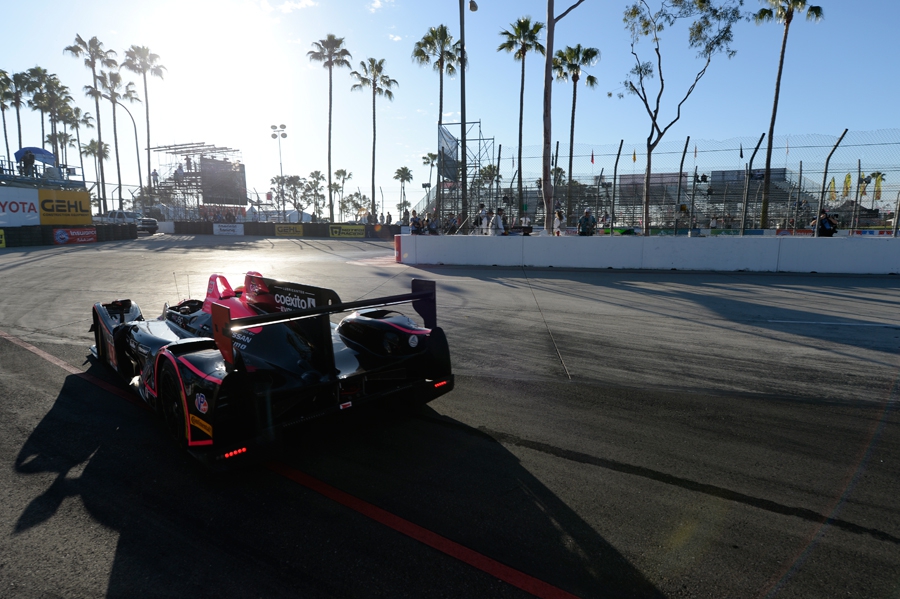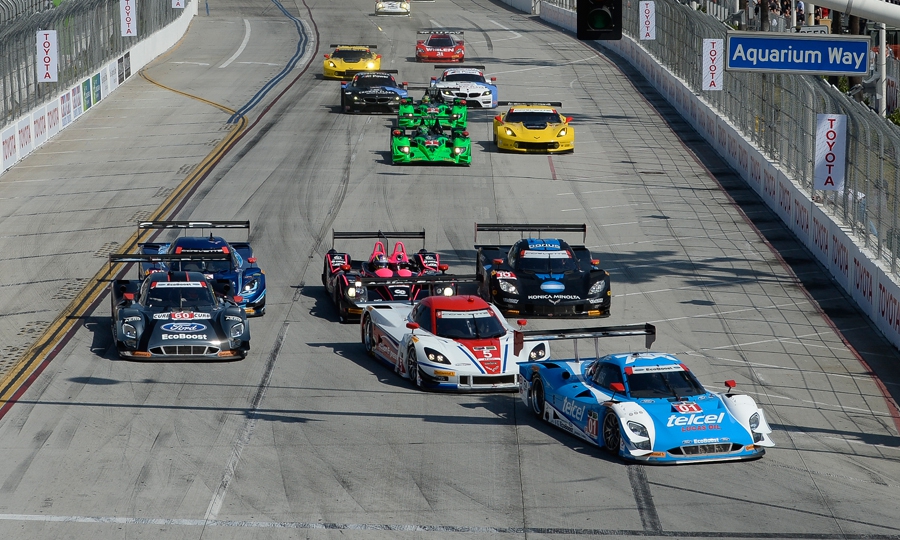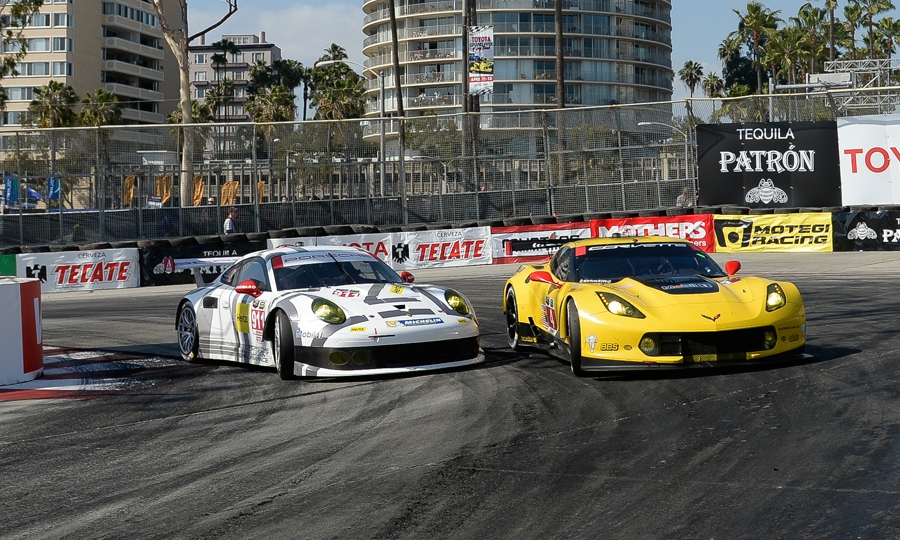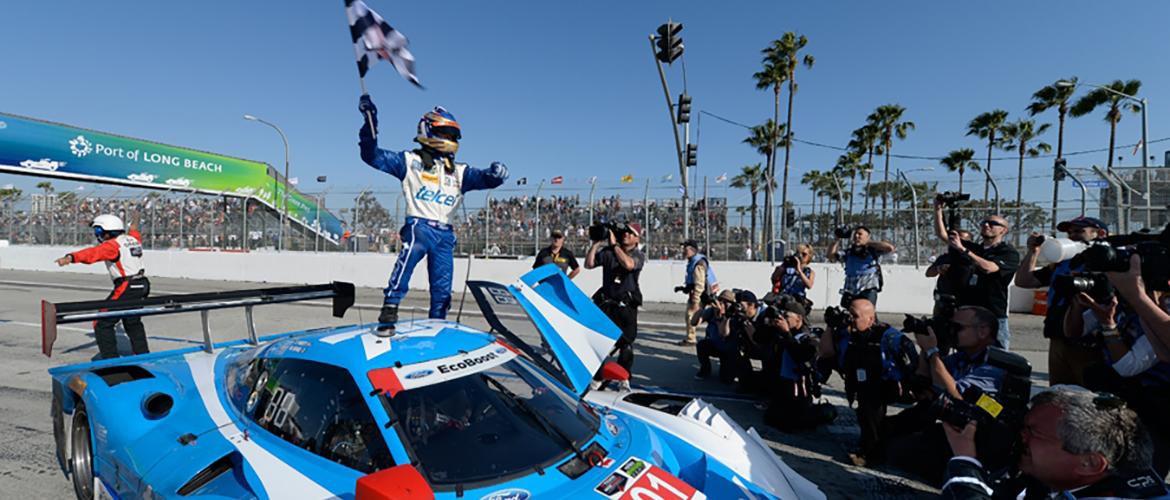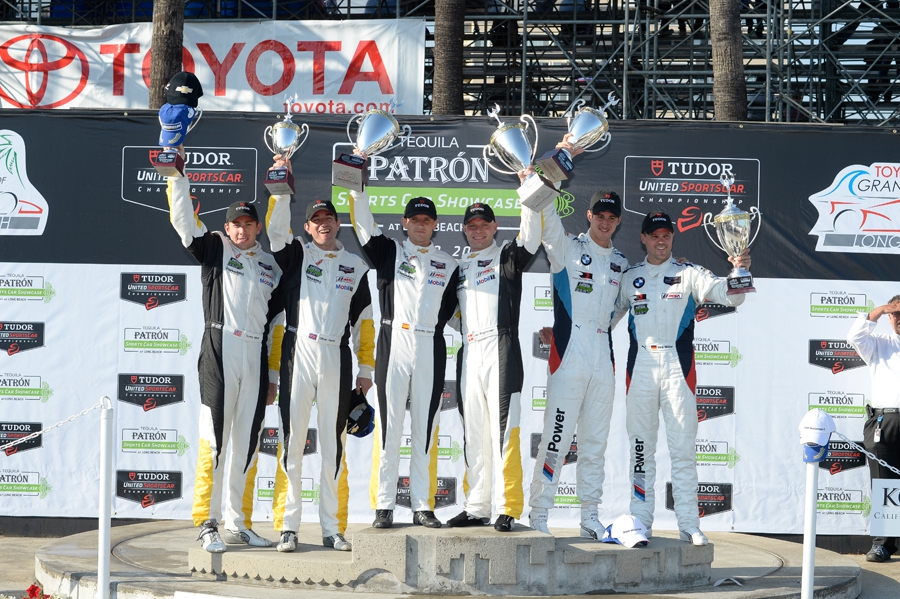Tudor United SportsCar Championship Roars into Long Beach
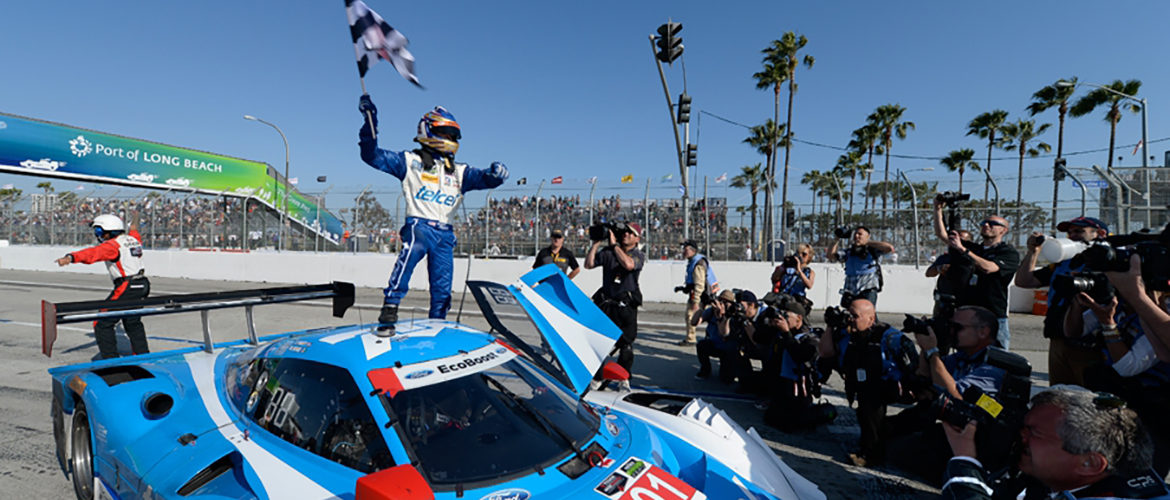
Originally published on 300magazine.com, April 2014
Round three of the 2014 Tudor United SportsCar Championship featured a change of pace from the first two events of the series. After opening its season with endurance epics at the Rolex 24 hours of Daytona in January and the Mobil 1 Twelve Hours of Sebring in March, the Tequila Patrón Sports Car Showcase at Long Beach marked the year’s first short-format sprint race.
With a total running time of 100 minutes, the Long Beach event was characterized by a faster tempo and a greater sense of pit lane urgency than the multi-hour marathons of the first two rounds. In theory, the short course, warm SoCal weather, and limited running time meant that only one pit stop would be required by any of the competing vehicles. Fans who watch news of the series know that seconds gained or lost in pit stops are as decisive as those contested on the track, and Long Beach offered each team only one shot at getting it right.
After the expansive purpose-built tracks at Daytona and Sebring, Long Beach’s temporary city street circuit promised a motorsports cage fight; the tight 1.968-mile course featured a tortuous urban layout that allowed few passing zones and placed a premium on car control skills. Drivers who played fast and loose with the racing line quickly found themselves overcome by pursuers – and the circuit’s unforgiving concrete barriers.
In the headlining Prototype category, which is reserved for purpose-built racecars, the No. 1 Riley Ford Daytona Prototype scored its second consecutive Tudor series win in the hands of Memo Rojas and American Scott Pruitt. In contrast to its underdog triumph at Sebring, when the No. 1 lacked the absolute pace of its Corvette-powered rivals, the Riley Ford EcoBoost won a commanding victory from class and overall pole position.
Within the confines of the Long Beach street circuit, the No. 1 fought a race-long battle with the No. 10 Corvette Daytona Prototype of Wayne Taylor Racing and the identical No. 5 car of Action Express Racing. Wayne Taylor Racing’s Rickey Taylor made a number of aggressive passing attempts in the closing laps, but a combination of parries from Ganassi driver Rojas and the tight Long Beach racing line kept the No. 10 car at bay.
The racing was riveting, the driving was surgical, and the outcome of the race remained undecided until the final hairpin turn. As a measure of competitive balance in the Prototype class, the top five cars in the category finished on the lead lap. The final Prototype margin of victory – .759 seconds – reveals the intensity of the battle for the overall lead. Followers of the Tudor series who watch news of the winter and spring races will have detected a pattern in this respect; each of the first three races has featured a stirring finale decided by mere seconds.
In the production-based GTLM class, Corvette Racing reasserted the dominance for which it was known in the previous American Lemans incarnation of the series. Following two races in which its C7R Stingrays had been quick but unlucky, Corvette Racing enjoyed a double podium in Long Beach courtesy of first and third places finishes.
The No. 3 C7R of Jan Magnussen and Antonio Garcia set a torrid pace from the class pole position, and the GTLM class devolved to a battle for second place between the Risi Competizione Ferrari 458 Italia, the No. 4 Corvette, and factory entries from Porsche, BMW, and Chrysler SRT.
The GTLM battle raging behind the untouchable No. 3 witnessed far more passing and jockeying for position than the prototype class. Positions were swapped due to dive-bomb passes under braking, drag races down the start-finish straight, shootouts between fleet-fingered pit crews, and spins off of the racing line. Although all of the cars in class exhibited flashes of pace, the No. 4 Corvette and No. 56 BMW Z4 GTE coupe of Rahal-Letterman Racing emerged as the late favorites for the final two steps of the podium.
Although the No. 4 Stingray appeared to have the measure of the Z4, BMW pilot John Edwards used defensive racing techniques to keep the quicker Corvette at bay until the finish. Despite the frustration of finishing behind a slower but cagier opponent, 28 year-old American Corvette pilot, Tommy Milner, the team’s most junior driver, set the fastest GTLM class lap of the race while hounding Edwards in the event’s closing minutes.
A fascinating sub-plot to the weekend’s events involved the ongoing development of the GTLM class SRT Vipers. Although the Vipers won their first class pole position at Long Beach in 2013, the cars proved off the pace during this round. While late chassis adjustments ensured an improvement in lap times, a post-qualifying decision to swap tire compounds forced the SRT No. 91 and No. 93 Vipers to start from the back of the 21 car field.
As heirs to the iconic ORECA Vipers that dominated GT racing in the late 1990s, the SRT Vipers race with the burden of equalling the exploits of their legendary precursors, but they have struggled to combine speed, reliability, and luck in their first year since returning to the track. As the program develops, fans that watch news of the production-based classes may find this team to offer one of the most compelling storylines of the 2014 Tudor series season.
After three rounds of the Tudor United SportsCar Championship, early series leadership standings have begun to crystalize. The Daytona-winning Action Express Racing team of Joao Barbosa and Christian Fittipaldi leads the Prototype standings with 98 points each; Long Beach and Sebring victors Pruett and Rojas are running a close second place with 93 points each. Action Express Racing leads Chip Ganassi Racing in the Prototype team standing by the same six-point margin.
In the GTLM standings, Rahal-Letterman Racing drivers Bill Auberlen and Andy Praulx lead Porsche North America’s Richard Lietz and Nick Tandy by two points. Likewise, BMW Rahal-Letterman Racing leads the team standings by the same margin.
Standings in the Prototype Challenge and GT Daytona classes did not change from the previous round at Sebring. Due to the limited paddock space at the 1.9-mile Long Beach track and the challenging layout of the street circuit, the above Pro-Am classes were omitted from the third Tudor series event. However, following a Sebring race in which over five hours of the twelve-hour event were run under yellow caution flags, the decision to withhold less experienced drivers from the challenging street course proved sound; the entire Long Beach event was raced under green flag conditions.
In Prototype Challenge, the CORE Autosport team of Jonathan Bennett, Colin Braun, and James Gue leads the drivers’ standings, and the CORE Autosport squad sits atop the team ranking. GT Daytona drivers Townsend Bell and Bill Sweedler remain in command of the drivers’ classification while their AIM Autosport outfit continues to control the team competition.
The full Tudor United SportsCar Championship field of four racing classes returns to action on May 4 at the Continental Tire Monterrey Grand Prix Powered By Mazda. Series drivers will tackle a two-hour sprint format race on one of the most celebrated road courses in North America: Monterrey, California’s Mazda Raceway Laguna Seca.

